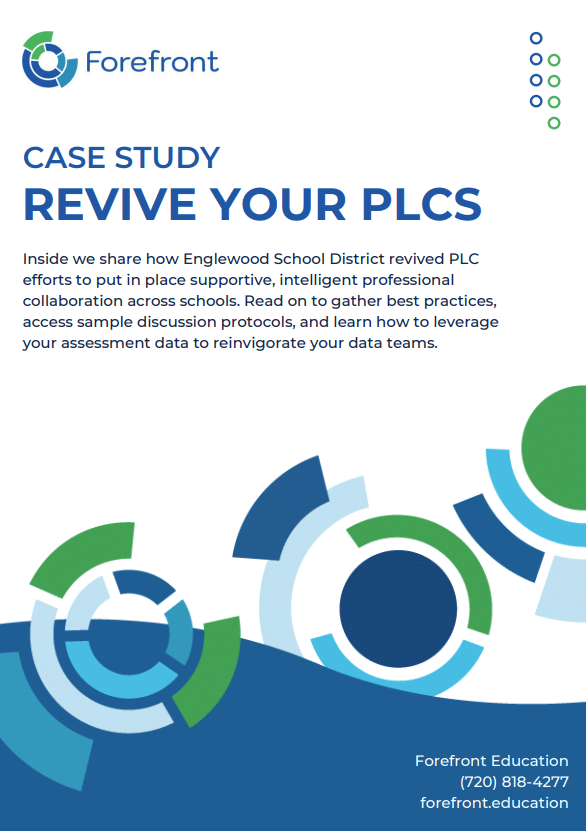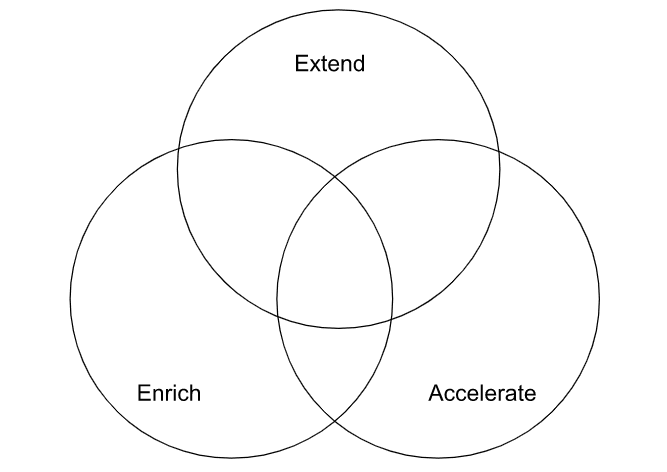Beyond Standards: 5 Strategies for Enrichment and Extensions
- June 19, 2023
- Blog

It can be a challenge to know what to do for students who “get it”. The default solution for some has been to accelerate, moving these students to the next grade or pulling material from the next grade, but there are also excellent opportunities for extension and enrichment activities. Extensions provide opportunities within the realm of the standards; enrichment reaches beyond the standards. In this post, I will highlight 5 strategies to integrate extension and enrichment activities to go beyond and deeper than the elementary math standards.
Using Extensions to Challenge Students
Extensions build on the material of the curriculum. They help students make dense connections among the ideas and numbers they are studying. Second grade is, for example, a critical grade as there is so much learning related to place value. Fluency with addition and subtraction under 100 is essential. What do we do when a student demonstrates that they can find sums accurately?
1) Teach Flexibility
Provide opportunities for students to build flexible and mental addition and subtraction strategies. Students should have the flexibility to solve problems in several ways. They should also have the ability to select among strategies to solve problems quickly and accurately. Computational fluency is a worthy goal for all students, especially for the most talented. Encourage advanced students to explore, play with, and develop real confidence with computation.
Flexibility is fostered through the exploration, discussion, and comparison of various calculation methods. These kinds of activities, which sometimes extend on the curricular materials for those who already “get it,” foster number sense development and computational fluency.
2) Encourage Pattern Identification
Extension work also includes seeking, identifying, and describing numerical and geometric patterns. Take for instance the interesting idea of the flipped digits.
Supplement with Enrichment Activities
Enrichment lies outside the standards. Authors of standards have always needed to limit the scope and make choices about what to include. Consequently, math is far too often looked at like an elevator shaft of ideas: we rarely let our students out of the elevator to explore. The vast world of ideas that relate to mathematics become possible once we start looking beyond the standards. As an educator, you may seek to accelerate a student’s path down the elevator shaft, but it is equally important to give students the opportunity to learn things outside that elevator shaft.
3) Explore the World of Math
Once students have shown that they understand the class content as determined by standards, it is an opportune time for the student to make some choices to self-direct their learning. Maybe they would like to learn some coding or explore Egyptian fractions. Perhaps they are just curious about patterns or want to try logic puzzles. Nanette Johnson and Robert Kaplinsky’s website Open Middle has curated some great math problems for K-12 that are easy to share with students and allow for multiple ways to approach and solve.
Enrichment stretches learning into STEM, social studies, and art. Topics for enrichment in the elementary grades include Roman numerals and investigating other numeric systems (Mayan, Inca, Sumerian, Egyptian), other base systems, logic puzzles, and computer sciences. Projects like code.org, Scratch, Scratch Jr., and Kodable provide convenient, creative, meaningful enrichment opportunities accessible to everyone.
4) Cultivate Joy
Extension activities provide opportunities to learn important and useful things and develop joy. When students self-direct their learning, choosing the topics and themes that interest them, they can develop and explore their passions and foster a deep love of learning. Associating learning with joy is one of the best gifts that you can give to your students.
5) Teach Depth not Breadth
For some students, acceleration is an excellent option, but for others, it leads to hydroplaning across fundamental mathematical concepts. When new topics are introduced superficially to these students, other lasting problems present themselves. A classic example is the multiplication of fractions: easy to memorize, and yet, there are few concepts in K-5 math more worthy of deep exploration. Students who accelerate at fifth grade are often provided with only a single day’s lesson.
Extensions develop depth, flexible application, connections, and fluency within and among the topics of the current grade level. Students demonstrate depth when they communicate their understanding more precisely and can see topics from a variety of perspectives. Consider the multiplication of fractions again. Students who are challenged to create story problems need to stretch to consider the topic from different vantage points. How does multiplication of fractions relate to linear measurement, movement through space, collections of objects, or to weight, area, and time? What is the best visual representation for each? When students already demonstrate a good understanding of topics, we should provide opportunities to go deeper.
Accelerate vs. Extend/Enrich
Acceleration is not the only solution for differentiating instruction for those who demonstrate early or advanced achievement. When we have students for whom we can compact instruction, we should. However, acceleration by digging into the topics and materials of the next grade or giving the student bigger numbers is not the only option: Extension and enrichment opportunities are in many ways preferable to the rushing that results from acceleration.
Extensions provide opportunities within the realm of the standards; enrichment reaches beyond the standards. It is important to have common, clear, well-articulated standards to define learning expectations for all students, but standards are, by their very nature, limited in scope. The authors of the Common Core, for example, decided that probability is best left to the middle school and high school grades. As a result, exploration with probability is now an excellent topic for enrichment in the elementary grades, opening wonderful opportunities for graphing, data analysis, exploration, game playing, game creation, and so on.
The ideas of enrichment, extension, and acceleration form a large Venn diagram. The intersection of enrichment and extension provides interesting opportunities too. How does fraction multiplication relate to art? Or with Egyptian fractions? How might you use it when building a model of a bridge as an engineering project?
When you are thinking of accelerating instruction, consider instead the possibility of going deeper into grade-level standards: provide students meaningful opportunities to extend and deepen understanding. And also, think outside the standards. Enrich learning by exposing all students to interesting topics that lie beyond the standards. Absolutely, it will be a great day when all of our students have mastered the standards, but it would be a sad thing if this is all anyone ever learned.
About the Author:
David Woodward is an educator with more than 25 years of experience as a classroom teacher and district leader in math education. He founded Forefront Education to help educators better understand student learning with meaningful assessments and support standards-based grading that is automatic, accurate, and reliable. David recently retired as a math coach at Boulder Valley School District in Colorado in June 2020. He leads the Universal Screeners for Number Sense project (formerly known as the BVSD K-5 Math Screeners). Read more.
About us and this blog
Our team and tools help schools implement standards-based grading, streamline assessment systems, and use meaningful data to drive decision-making.
Free PLC Case Study
Learn about how Forefront client Englewood School District put in place supportive, intelligent professional collaboration across schools. Download your free copy today to access best practices, view sample discussion protocols, and learn how to leverage your assessment data to reinvigorate your data teams.

More from our blog
See all postsForefront is the only assessment data solution optimized for classroom assessment results, leveraging these results to fuel instruction, PLCs, and grading. Elevate meaningful assessment data district-wide to transform how you understand and communicate about student learning across your schools.
Copyright © 2025 Forefront Education, Inc. All Rights Reserved.








